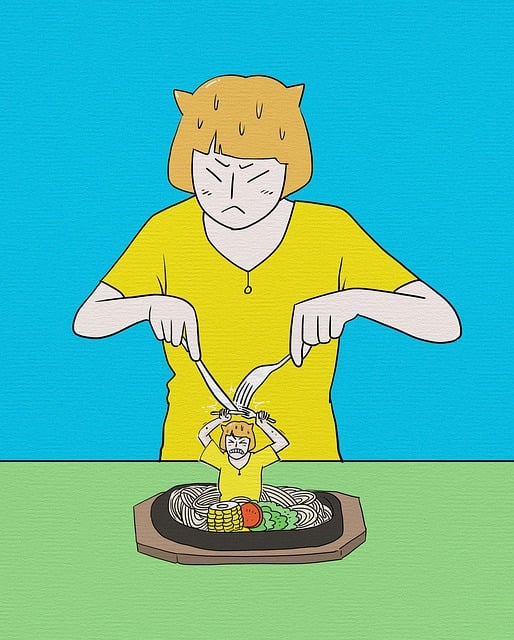Fat cells, essential for energy storage, can be targeted for reduction through non-invasive techniques like CoolSculpting® and HIFU, offering safe alternatives to surgery. These methods, focusing on targeted fat loss, shrink or eliminate fat cells without incisions, with minimal downtime. Cryolipolysis and HIFU stimulate lipolysis, the body's natural fat breakdown process. Surgical options, such as liposuction, are suitable for severe cases, improving aesthetics and health. Combining these treatments with a healthy lifestyle promotes lasting results. Reputable clinics ensure safety and effectiveness through approved methods, with recovery times ranging from minimal to a week, including side effects like swelling and redness.
Fat cells, or adipocytes, play a pivotal role in weight management. They store excess energy, but their size and number can impact overall health. This article explores targeted fat loss strategies, delving into non-invasive techniques like cryolipolysis and high-intensity focused ultrasound (HIFU), as well as the science behind popular treatments. We’ll also discuss surgical options for severe cases, lifestyle changes to complement reduction efforts, and what to expect post-treatment in terms of safety, efficacy, and recovery.
Understanding Fat Cells and Their Role in Weight Management

Fat cells, also known as adipocytes, are an integral part of our bodies’ fat storage system. They play a dual role in weight management; they store energy in the form of lipids during periods of excess calorie intake and release this stored energy when the body requires it, particularly during times of reduced food availability or increased physical activity. The number of fat cells in our body tends to reach a maximum during adolescence, but their size can fluctuate based on diet and exercise habits.
When we consume more calories than we burn, these extra calories get stored in existing fat cells, causing them to expand. Conversely, targeted fat loss treatments aim to reduce the size of these fat cells by stimulating lipolysis – the natural process where fat is broken down and used as energy. This not only leads to a reduction in body fat but also potentially improves overall health markers associated with obesity.
Non-Invasive Techniques for Targeted Fat Loss

Non-invasive techniques have emerged as popular and effective methods for targeted fat loss, offering a safer alternative to surgical procedures. These treatments leverage advanced technologies to shrink and eliminate fat cells without incisions or extensive recovery periods. One prominent method is CoolSculpting®, which uses cryolipolysis to freeze and destroy fat cells, leading to significant reductions in problem areas. Another innovative approach involves high-intensity focused ultrasound (HIFU), where sound waves are targeted at fatty tissues, causing them to break down and be eliminated by the body’s natural processes.
These non-invasive treatments are often preferred due to their minimal downtime, low risk of complications, and ability to deliver precise results. They are suitable for individuals seeking localized fat reduction, addressing specific problem areas like love handles, belly fat, or chubby thighs. Moreover, many of these procedures can be performed in a doctor’s office, making them easily accessible for those looking to enhance their physique without major interventions.
The Science Behind Popular Fat Cell Reduction Treatments

The science behind popular fat cell reduction treatments revolves around targeted fat loss, a precise approach to reducing adipose tissue. These treatments leverage a deep understanding of how fat cells behave and interact with our bodies. Key methods include cryolipolysis, which uses cold temperatures to freeze and destroy fat cells, and high-intensity focused ultrasound (HIFU), which targets and breaks down fat at the cellular level.
Both techniques stimulate the body’s natural processes to eliminate fat. Cryolipolysis causes targeted fat cells to break down over time, while HIFU generates heat energy that disrupts fat cell membranes. This leads to a gradual reduction in fat deposits without impacting surrounding tissues. The effectiveness of these treatments is backed by extensive research, making them popular choices for those seeking safe and effective ways to manage their weight and body composition.
Exploring Surgical Options for Severe Cases

For individuals with severe fat accumulation that hasn’t responded to non-surgical methods, exploring surgical options can offer a solution for targeted fat loss. Procedures like liposuction and tummy tuck not only enhance physical appearance but also address underlying health concerns related to excessive fat. Liposuction, in particular, is a popular choice as it allows for precise removal of specific fat cells from problem areas.
In severe cases, combining these surgical treatments can lead to dramatic results, providing patients with a more proportionate body shape and improved overall health. However, it’s crucial to consult with board-certified specialists who can assess individual needs and guide patients through the most suitable surgical approach for targeted fat loss, ensuring safety and efficacy.
Lifestyle Changes to Complement Fat Cell Reduction

Adopting a healthy lifestyle is an essential complement to any fat cell reduction treatment. By integrating targeted fat loss strategies into your daily routine, you can enhance the effectiveness of your chosen procedure and achieve longer-lasting results. Regular exercise plays a pivotal role, focusing on cardiovascular activities and strength training to burn calories and build muscle, respectively. A balanced diet is equally crucial; incorporating whole foods rich in nutrients supports overall health while promoting targeted fat loss.
Additionally, prioritizing sleep and stress management is beneficial. Adequate rest allows your body to recover and repair, while managing stress levels can prevent the release of cortisol, a hormone known to promote fat storage. These lifestyle adjustments work synergistically with fat cell reduction treatments, fostering a healthier environment for optimal results.
Safety, Efficacy, and Recovery: What to Expect Post-Treatment

After undergoing fat cell reduction treatments, it’s natural to have concerns about safety and effectiveness, as well as what to expect during recovery. Rest assured, when performed by qualified professionals using approved methods like targeted fat loss techniques, these procedures are generally safe and non-invasive. The key is to choose a reputable clinic and follow the post-treatment instructions provided.
In terms of efficacy, results may vary from person to person based on factors like overall health, diet, and exercise habits. However, targeted fat loss treatments can help reduce stubborn fat deposits, leading to a more sculpted appearance. Recovery typically involves minimal downtime, with most individuals returning to their regular activities within a few days. Swelling and redness are common immediate side effects, but these usually subside quickly. It’s crucial to avoid strenuous exercise for the first week and adhere to dietary recommendations from your healthcare provider for optimal results and faster recovery.
